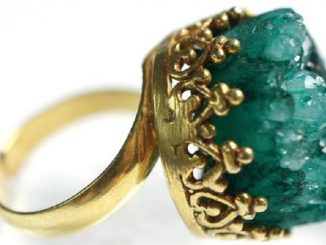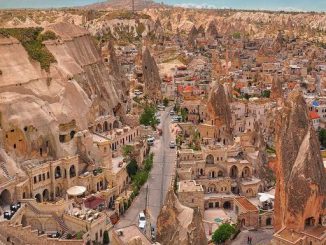While the ancient city of Pompeii often steals the spotlight as one of the most famous archaeological sites in the world, its lesser-known neighbor, Herculaneum, offers an equally fascinating glimpse into the past. Nestled along the Bay of Naples in Italy, Herculaneum was a thriving Roman city until it met its tragic end in 79 AD, buried under a blanket of volcanic material from Mount Vesuvius. Unlike Pompeii, which was covered in ash, Herculaneum was buried under a thick layer of volcanic mud, preserving it in remarkable detail. Today, the ruins of Herculaneum provide an unparalleled window into ancient Roman life, showcasing buildings, artifacts, and even organic materials that have survived for nearly two millennia. In this blog post, we will explore the wonders of Herculaneum, delving into its history, its unique preservation, and its significance as a treasure trove of ancient discoveries.

The History and Destruction of Herculaneum
Herculaneum, like Pompeii, was a prosperous Roman city during the first century AD. It was a bustling seaside resort town, known for its grand villas, luxurious baths, and vibrant social life. The city’s inhabitants enjoyed a high standard of living, as evidenced by the intricate mosaics and frescoes that adorned their homes. However, the tranquility of Herculaneum was shattered on August 24, 79 AD, when Mount Vesuvius erupted with catastrophic force. Unlike Pompeii, which was quickly buried in a rain of ash and pumice, Herculaneum was engulfed by a series of pyroclastic flows—fast-moving currents of hot gas and volcanic matter. This volcanic material, combined with the subsequent layers of mud and debris, created an airtight seal over the city, preserving it far better than Pompeii.
The eruption’s impact on Herculaneum was devastating, but it also provided a unique preservation environment. The rapid burial process protected buildings, household items, and even wooden structures and organic materials from decay, offering an extraordinarily detailed snapshot of Roman life. Archaeologists have discovered everything from intact furniture and food remains to charred scrolls that can still be deciphered today. This level of preservation allows researchers to gain a deeper understanding of the daily lives of Herculaneum’s residents, from their diet and social customs to their art and architecture.
The Archaeological Treasures of Herculaneum
The ruins of Herculaneum are a testament to the ingenuity and sophistication of Roman engineering and design. One of the most striking features of the site is the exceptional preservation of its buildings. Unlike Pompeii, where many structures were reduced to rubble, Herculaneum’s buildings have retained their original height, with multiple floors still standing. Visitors can explore a variety of structures, from opulent villas to humble shops, each offering a glimpse into different aspects of Roman society.
One of the most famous villas in Herculaneum is the House of the Bicentenary, named to commemorate its excavation 200 years after the eruption. This grand residence boasts beautifully preserved frescoes and mosaics, showcasing the artistic talent of the time. Another notable structure is the Suburban Baths, a public bathhouse that highlights the importance of bathing and socializing in Roman culture. The baths feature intricate mosaics and an impressive hypocaust system used for heating the water.
In addition to these architectural marvels, Herculaneum has yielded a wealth of artifacts that provide insight into everyday life in the ancient city. Excavations have uncovered a wide range of items, including pottery, tools, jewelry, and even carbonized food remains. These discoveries offer a tangible connection to the people who once lived in Herculaneum, allowing us to piece together their stories and understand their world in unprecedented detail.
Organic Preservation and Its Significance
One of the most remarkable aspects of Herculaneum is the preservation of organic materials, which is virtually unparalleled in other archaeological sites from the same period. The unique conditions created by the pyroclastic flows allowed for the survival of wooden furniture, textiles, and even food. These organic materials provide a rare and valuable glimpse into the daily lives and practices of the ancient Romans.
For instance, archaeologists have discovered wooden furniture, including beds, cupboards, and doors, that remain intact after nearly 2,000 years. These items reveal the craftsmanship and design preferences of the time, offering insight into the domestic life of Herculaneum’s residents. Similarly, the preservation of food remains, such as carbonized bread and fruits, sheds light on the diet and culinary practices of the ancient Romans.
One of the most significant discoveries in Herculaneum is the collection of papyrus scrolls found in the Villa of the Papyri. These scrolls, which were carbonized by the volcanic eruption, contain texts written in Greek and Latin, offering a wealth of information about the intellectual pursuits and literary culture of the time. Advances in technology, such as multispectral imaging, have allowed researchers to read these scrolls without damaging them, unlocking new knowledge about ancient Roman thought and philosophy.
4. Visiting Herculaneum Today: A Journey Through Time
Today, Herculaneum is a UNESCO World Heritage Site and a popular destination for tourists and scholars alike. The site offers a more intimate and less crowded experience compared to Pompeii, allowing visitors to explore its well-preserved ruins at a leisurely pace. Walking through the streets of Herculaneum, one can almost feel the presence of its ancient inhabitants, as if the city has been frozen in time.
Visitors to Herculaneum can marvel at the intricate frescoes and mosaics that adorn the walls of its buildings, offering a glimpse into the artistic and cultural achievements of the ancient Romans. The Suburban Baths, with their stunning mosaics and innovative heating system, provide insight into the social and recreational activities of the time. The House of the Bicentenary and other grand villas showcase the luxurious lifestyle enjoyed by the city’s elite, while the more modest dwellings and shops reveal the daily lives of ordinary citizens.
The site also features a museum that houses many of the artifacts discovered during excavations, including pottery, tools, jewelry, and even the famous carbonized scrolls from the Villa of the Papyri. This museum offers a comprehensive overview of life in Herculaneum, providing context and depth to the ruins and enhancing the visitor experience.
Rediscovering the Ancient World Through Herculaneum
The ruins of Herculaneum offer an unparalleled window into the past, providing a detailed and intimate glimpse into the lives of the ancient Romans. From its well-preserved buildings and artifacts to its remarkable organic materials, Herculaneum stands as a testament to the ingenuity and resilience of a civilization that continues to captivate and inspire. As we explore the ruins of Herculaneum, we are reminded of the importance of preserving and studying these ancient sites, as they hold the key to understanding our shared human history.
In the final part of this blog post, we turn our attention to the broader context of ancient discoveries. The preservation of sites like Herculaneum and the ongoing advancements in archaeological technology continue to reveal new insights into the ancient world. From the deciphering of the carbonized scrolls of the Villa of the Papyri to the discovery of hidden chambers and artifacts in other ancient cities, the field of archaeology is constantly evolving. These discoveries not only deepen our understanding of the past but also enrich our appreciation for the complexity and diversity of human history. Whether through the exploration of ancient ruins or the study of preserved artifacts, the journey of discovery continues, offering endless opportunities to uncover the mysteries of the ancient world.
4o


